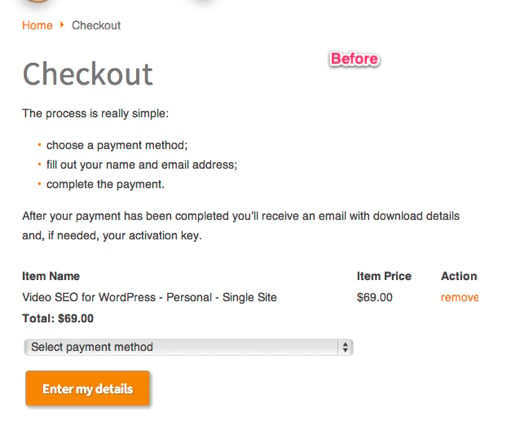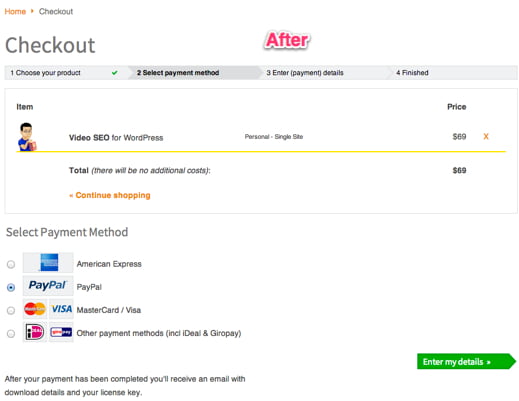Planning and checking your Conversion Rate Optimization

During my attempts to optimize the conversion rates here on yoast.com, I’ve met with quite some hurdles and roadblocks. That’s why I thought it would be a good idea to write a post; so you won’t have to invent the wheel twice.
Define your Intensive Care Pages
Although it’s very tempting to start off your testing right away, there are a few things you should think about first, or your energy and resources might be directed the wrong way. In my previous post on conversion rate optimization, I’ve already said it’s important to have hypotheses before you start testing. But how do you know which pages to test in the first place?
In order to find these pages, dubbed by myself as Intensive Care Pages, you’ll need to know what the top priorities of your website are. For most people doing conversion rate optimization that’s pretty easy: making money. Since finding the right pages to optimize is a bit harder when you’re making money on them, I’ll tell you the best ways to do this.
Use your tracking
I’m assuming you’re tracking your traffic and sales through Google Analytics or something similar, but if you’re not, you can simply stop reading now and get to it! There are a few ways to find your pages in need of intensive care in Google Analytics. The easiest way is to check which pages have the highest exit rate.
The exit rate is the percentage of people leaving your site from a certain page, not to be confused with bounce rate. So people leaving a page, but staying on your website, will not be counted towards your exit rate. You can find your exit rate in Google Analytics.
However, when you’re making money, it’s not that easy. Of course, the exit rate is still relevant, but how do you know that page is actually making you money? Maybe a page with a slightly lower exit rate is making you much more money. If that’s the case, that second page would be far more important to optimize.
This is where the “page value” comes in. Page value is basically the average amount of money people spend after having visited a page. So if a bigger portion of the visitors to a certain page buy something on your website, the page value of that page will go up. If you select “All Pages” instead of “Exit Pages” in Google Analytics, you’ll be able to order your pages by “Page Value”. In order to get some relevant data, you should set an advanced filter:

Of course, make sure the numbers after ‘Greater than’ actually apply to your website.
You’ll now be able to see your most important and valuable pages. Are there any there with a high exit rate and a high page value? Those are your Intensive Care Pages!
Make a plan
So now you know the pages of your website that are most in need of attention. Now what? Well, now you need to start planning your improvements. First, assuming you’ve found more than one page on your website that could do with some conversion rate optimization, you’ll need to know where to start. Next, you’ll need to make sure you know what’s working for you on that page and what isn’t.
Last things first
When making a decision on what page to optimize first, I seriously prefer starting at the end. If you start optimizing earlier pages, there’s no way to tell how much of your efforts are simply undone by a bad page that follows. So usually this means you should start with your checkout page. The motivating part about this is, if you manage to get some improvements in the conversion rate here, it’s pure money!
And obviously, once you’re pleased (for now) with the results of your optimization, you can take the second to last page in your conversion funnel.
Surveys work!
The next step is fairly obvious. You need to know what to improve. While you might have ideas about this yourself, try to keep an objective mind about all this. Your visitors can have vastly different ideas from your own on what needs improvement.
A very effective and easy way to get to know what your visitors are missing is to simply ask them! We’ve been using on-site surveys on yoast.com for a few months now, and the results are always helpful and insightful. You can find out everything you need to know with three simple survey questions, thanks to our friend Avinash Kaushik:
- What is the purpose of your visit to our website/this page today?
- Were you able to complete your task today?
- If you were not able to complete your task, why not?
These questions will tell you what your visitors are looking for, whether they can find it, and what they think is missing. This kind of data is simply invaluable and you need to use this as your guide towards a better-optimized page.
Big steps, then small steps
When you know which pages you need to work on first, and know what needs to be done on those pages, it’s time for an actual plan! You need to write down, per page and in chronological order, what it is you want to change. This is really the only way to keep any kind of overview on what you’re trying to do. In my experience, this will turn out to be a much bigger list than you’d ever have anticipated.
There’s no way you can test all those single changes after each other and still know what combination of changes will generate the most profit. So you’ll need to make bigger changes in the beginning. Don’t be afraid to make big changes, especially if you can find studies backing your changes. At yoast.com we recently completely changed our checkout page:


As you can see we’ve made a lot of changes in one go. You need to make these kinds of changes first, to keep from being swamped by the number of tests you need to run. Testing the effects of such changes is beyond the scope of any tool I know of though. You’ll just need to monitor your stats and revenue to see if there’s any improvement (or not) to prior your changes.
When you’ve done these bigger changes, you can start ‘tweaking’ the pages with the smaller things you haven’t implemented yet. And this is why it’s good you’ve kept a written log of what you wanted to do; so you don’t miss anything!
Check your “facts”
By far the biggest roadblock I’ve encountered are the conversion rate optimization tools you can use. Because, quite frankly, each and every one of them sucks. Sure, they’re fine for all the basic optimization, but as soon as some more complicated revenue and sales are involved, they’re just lacking.
At the moment, we’re using Optimizely, which is an awesome tool from a usability perspective. It’s easy, clean and straightforward. This is why I thought it would be simple enough to get some tests done on a single plugin page. Oh, how naive I was. I could very easily change some text, or a button, or anything on the page, and the test would start running. So everything seemed fine, until I encountered the data Optimizely was giving back to us.
Total revenue
It seems Optimizely (and actually their biggest competition VWO as well) can check your revenue, but only your total revenue. If you want them to track anything more specific, everything will go haywire. In a single month, Optimizely managed to be a whopping $10,000 off from what we’d actually made. How’s that for polluted data?
It still baffles me how such a big company, which helps so many big clients, can be found to be so lacking. It seems a simple enough task, but to this day their reply is: “we agree, we’re working on it, but we haven’t fixed it yet”. Which is awkward really, because tracking their tests through KISSMetrics actually gives me exactly the data I want.
But they’ve taught me one thing: check your “facts”. Never assume what you’re getting back from your conversion rate optimization tools is what’s really happening. Always use your own data as a check, and be sure that the tools are doing what they’re supposed to be doing.
Have you encountered any problems yourself? Or maybe even found a tool that you think is working? Let me know in the replies below!

